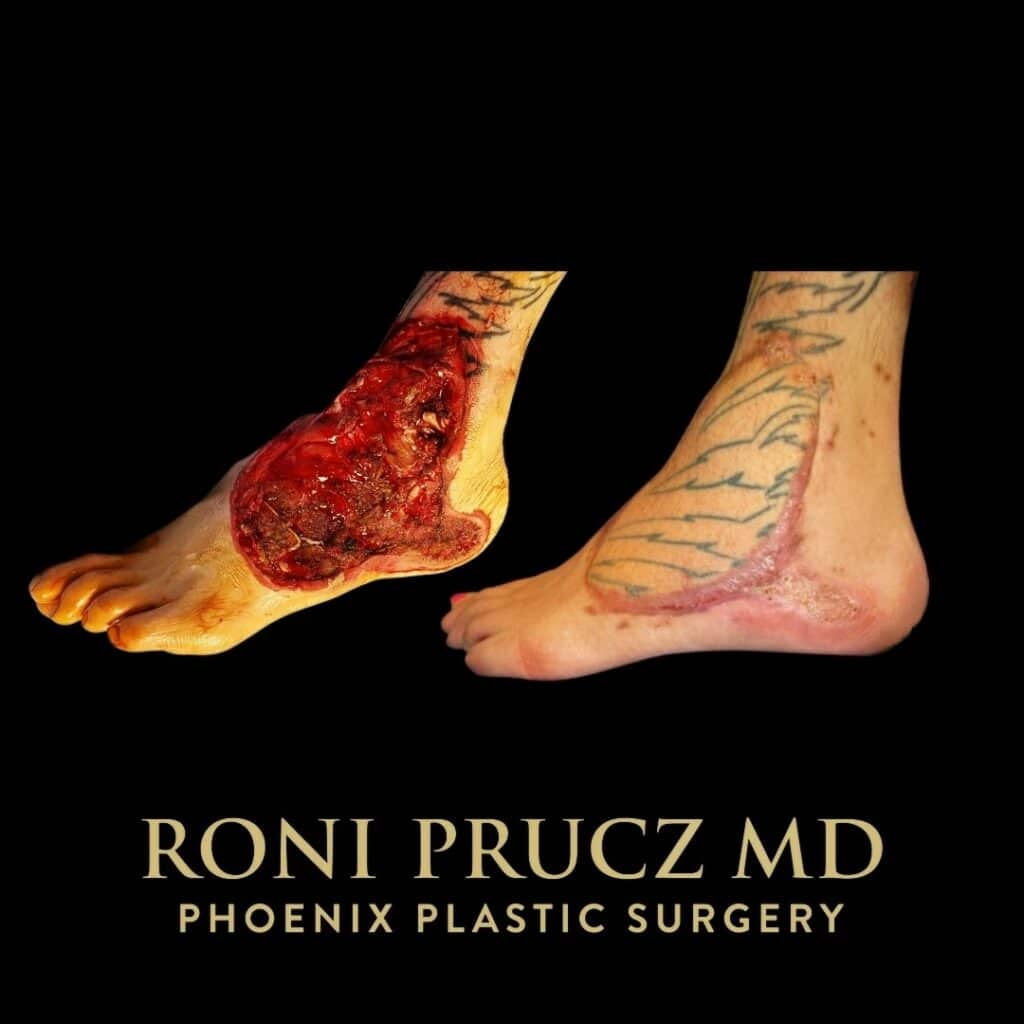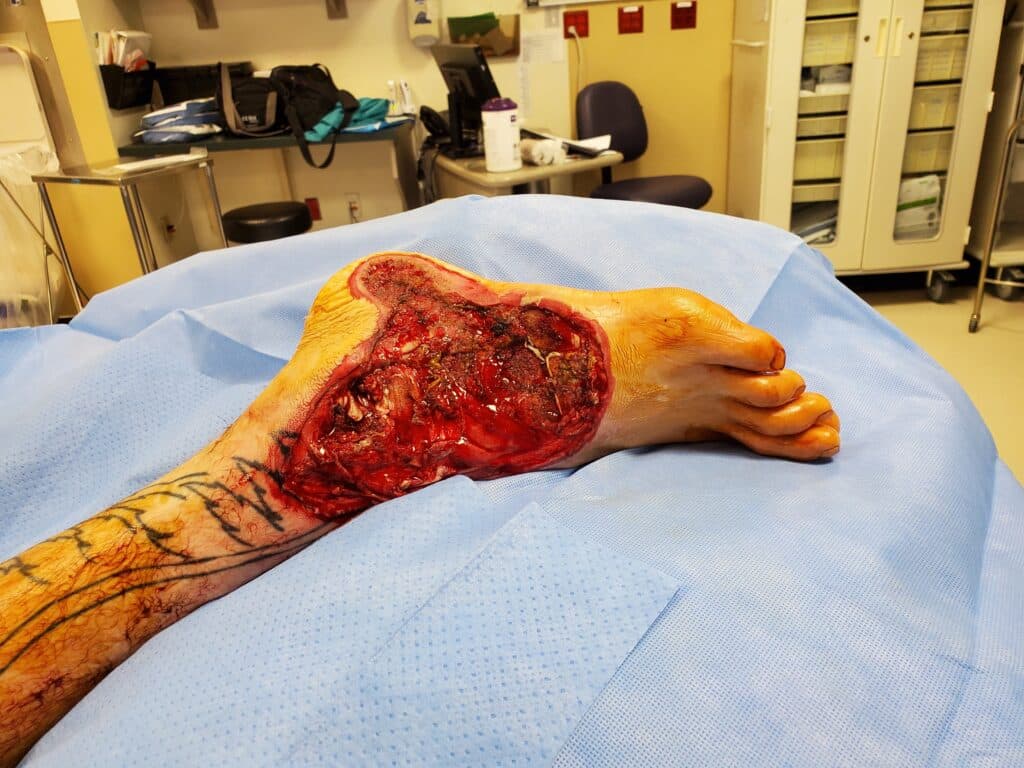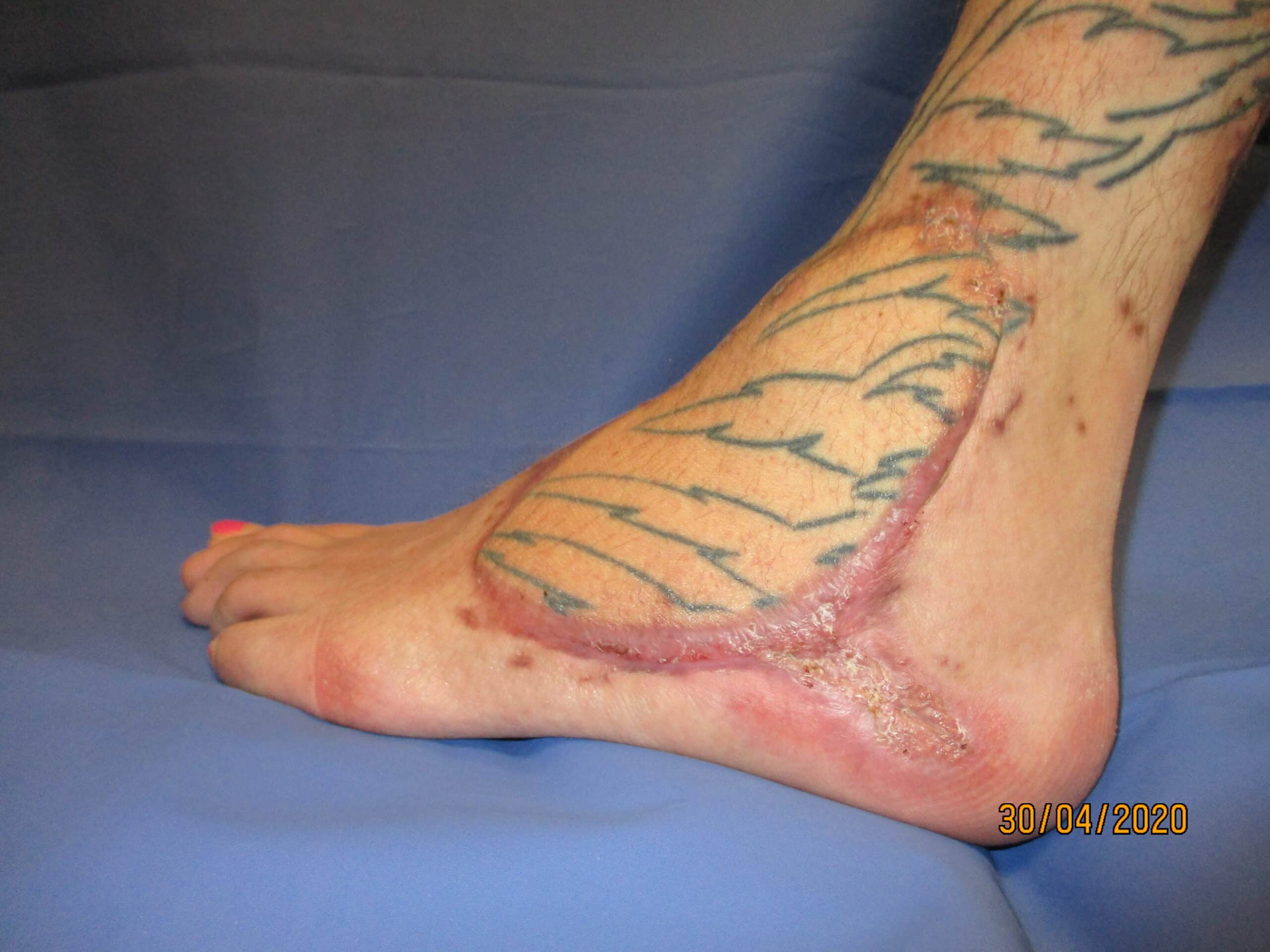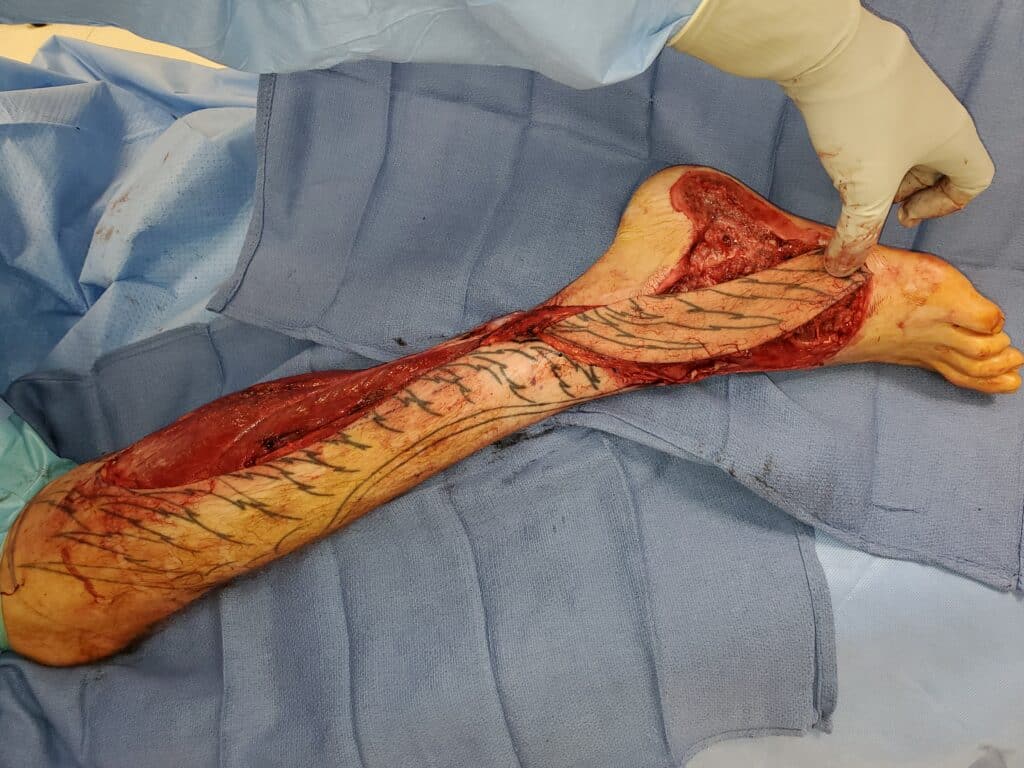Key Characteristics of the Sural Flap
- Adipofascial Flap: The sural flap is classified as an adipofascial flap, meaning it includes not only skin but also the underlying fascia and a layer of subcutaneous fat. This composition allows it to provide natural and durable skin coverage.
- Thin Skin: The sural flap is particularly well-suited for cases where thin skin coverage is required, such as in the ankle and lower leg. Its thinness helps to preserve the function and aesthetics of these areas.
Advantages of the Sural Flap
- No Skin Graft Required: Unlike traditional reconstructive methods, the sural flap provides thin skin coverage without the need for a skin graft. This reduces the complexity of the procedure and minimizes potential complications.
- Excellent Aesthetic Outcomes: The flap’s thin skin closely mimics the natural skin of the ankle and lower leg leading to excellent cosmetic results.
- Alternative to Free Flaps: While free flaps are a powerful technique, they require microsurgery to reconnect blood vessels. The sural flap offers a reliable alternative.
Choose Precision and Healing: Phoenix Plastic Surgery
When precision, functionality, and aesthetics are paramount in ankle and leg reconstruction, trust the hands of an experienced expert. Dr. Prucz’s commitment to surgical mastery, combined with compassionate care, ensures that your experience is marked by exceptional support. With years of experience and top-notch training, Dr. Prucz is the number one rated Plastic Surgeon in Phoenix, Scottsdale Top Plastic Surgeon, and a Paradise Valley Top Plastic Surgeon. Click here to schedule your consultation now!





















